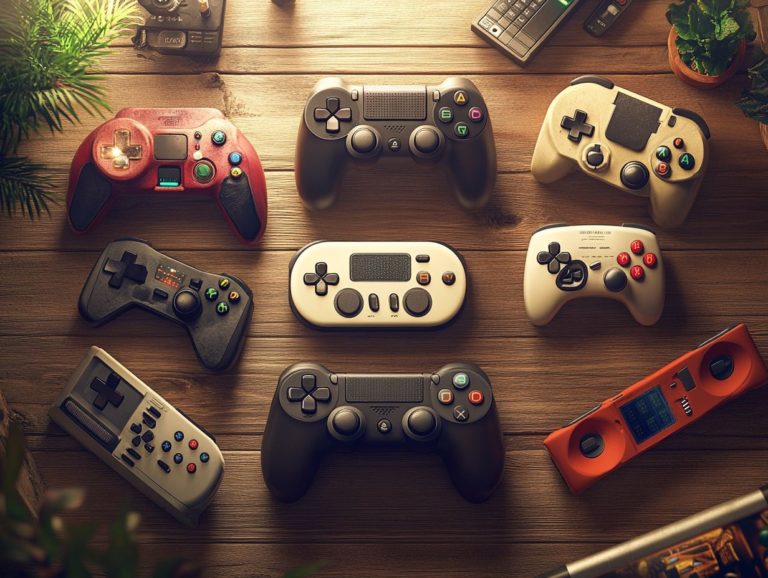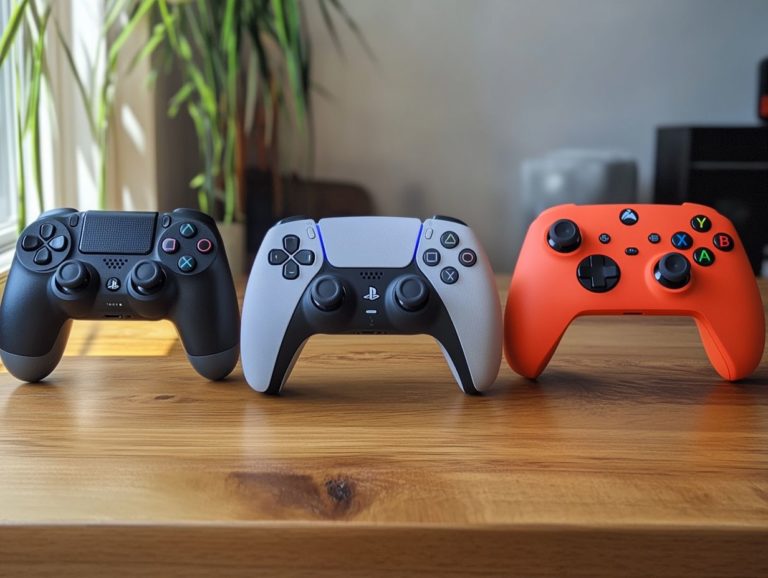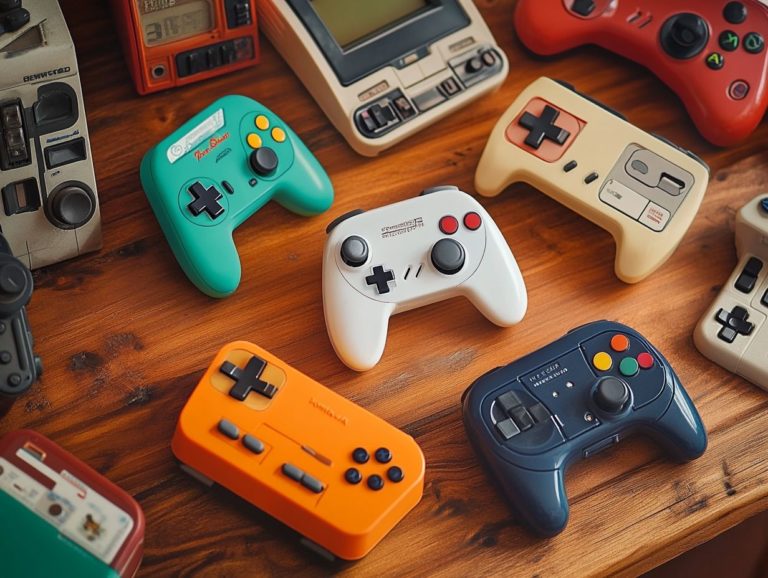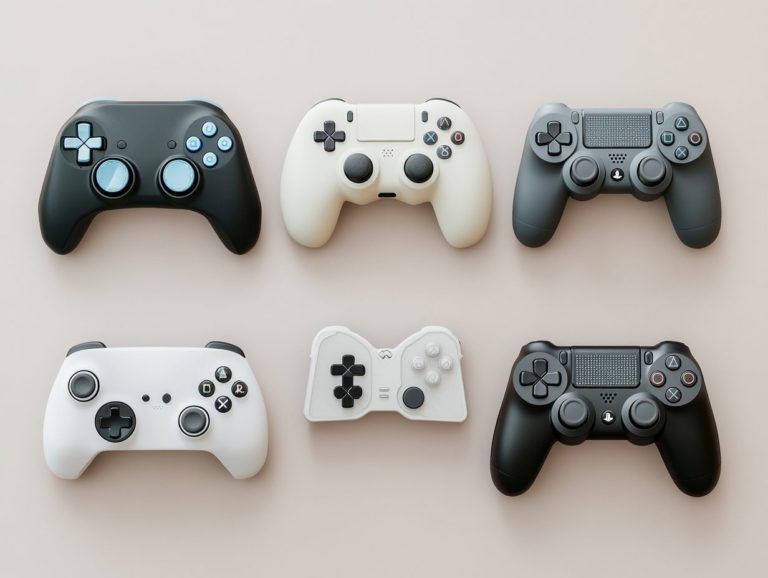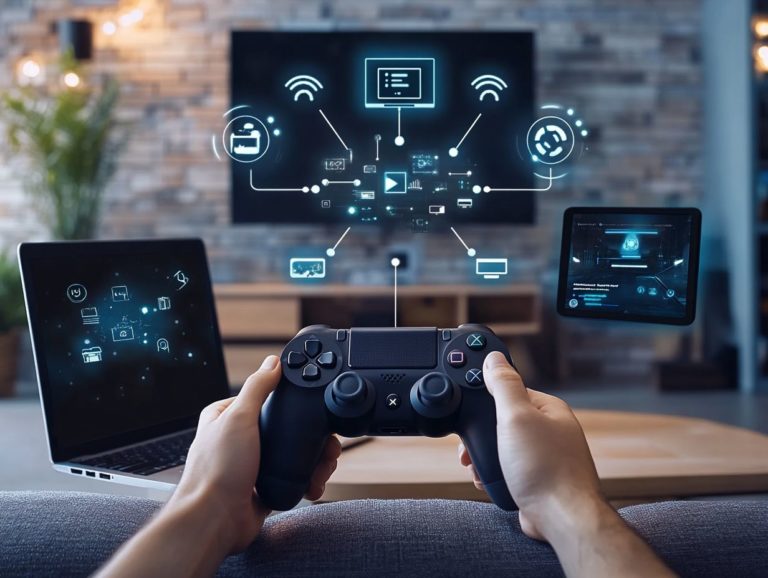understanding controller input lag and its impact
In the fast-paced realm of gaming, every millisecond holds immense importance. Controller input lag can drastically impact your performance and overall enjoyment.
This article delves into the intricacies of controller input lag what it is, its causes, and how it shapes your gameplay experience. It also outlines practical strategies to minimize lag, introduces tools for measuring it, and examines the future of controller technology.
Whether you re a casual player or a fierce competitor, grasping this phenomenon is crucial for elevating your gaming experience to its fullest potential.
Contents
Key Takeaways:

Controller input lag is the delay between pressing a button on your controller and seeing the action on your screen. High controller input lag can negatively impact gameplay and user experience, leading to frustration and decreased performance.
To reduce controller input lag, strategies such as using wired controllers and optimizing wireless connections can be employed. Testing and measuring can be done using specialized tools and methods.
What is Controller Input Lag?
Controller input lag is a crucial element that can significantly influence your gaming experience, especially in fast-paced titles like Call of Duty and Street Fighter.
This delay affects how responsive your gameplay feels, impacting your effectiveness in the game.
As gaming technology advances, understanding input lag becomes essential for competitive gamers who depend on precise timing and accurate responses to excel in tournaments.
Definition and Explanation
Input lag refers to the delay you experience from the moment you press a button on your gaming controller to when that action appears on your screen. This delay plays a crucial role in your gaming performance.
Typically measured in milliseconds (ms), input lag is affected by factors like the response time of your display. The speed at which a pixel transitions from one color to another influences your reaction time and enjoyment of the game.
For fast-paced games, a display with minimal input lag is essential. In fast-paced gaming, every millisecond can be the difference between winning and losing!
Causes of Controller Input Lag
Controller input lag can stem from several factors that influence your gaming performance. These factors include technical issues and your gaming environment.
Technical and Environmental Factors
Technical and environmental factors shape the controller input lag you experience while gaming. They affect everything from latency metrics to the technologies that enhance performance.
Understanding HDMI settings can help your input commands process more quickly. With HDMI 2.1, you gain access to higher bandwidth, allowing for 4K gaming at 120Hz, which significantly reduces lag.
Adaptive sync technologies like NVIDIA G-Sync or AMD FreeSync help match the speed of your display with your graphics card. They synchronize refresh rates, effectively minimizing stutter and tearing.
Don t underestimate environmental factors either; the lighting in your room can alter your perception of lag. The distance from the display might introduce a delay that complicates your gaming experience.
The Impact of Controller Input Lag
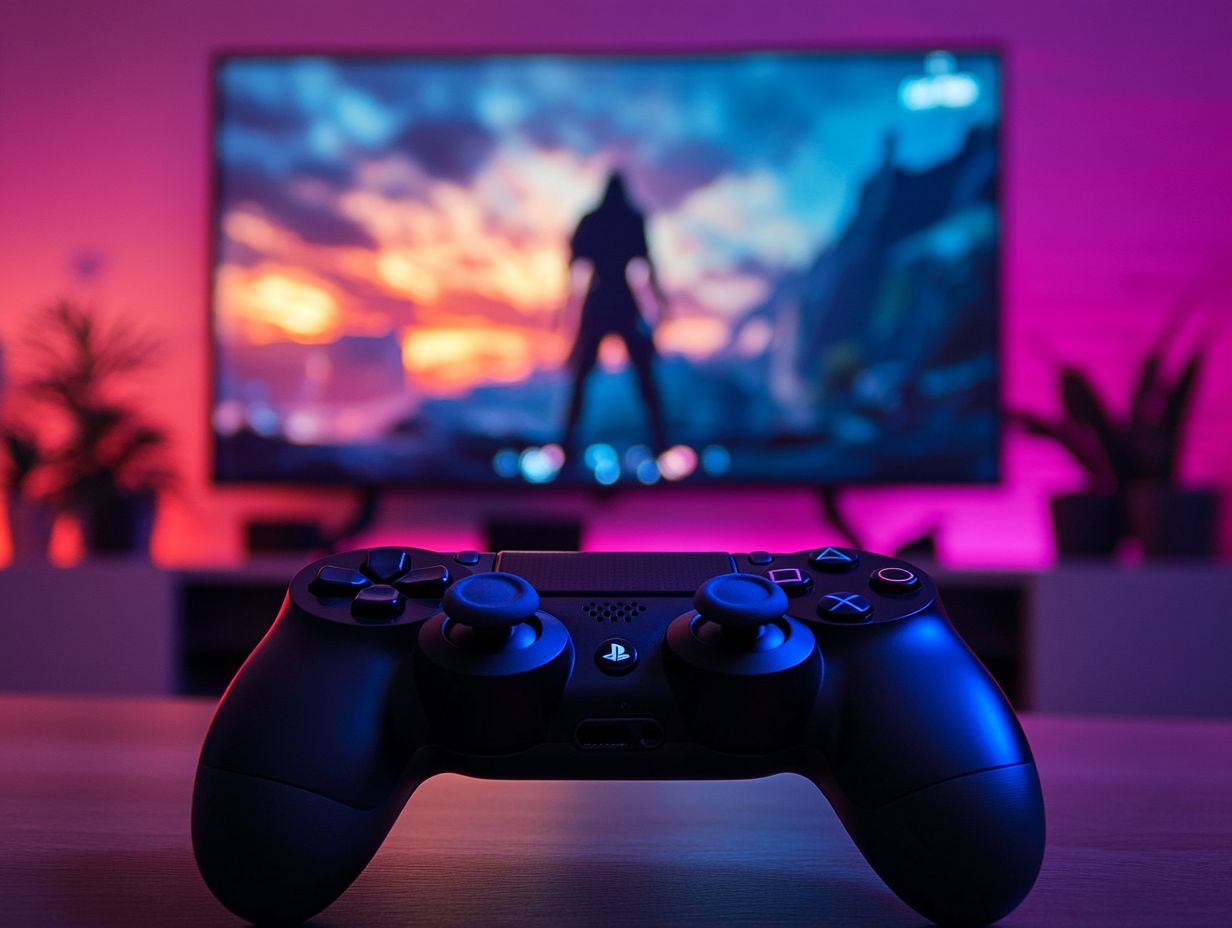
Controller input lag can change your gaming performance dramatically! Even the slightest delay in input response can shift gameplay dynamics.
Those fractions of a second can change the outcome of your game!
Effects on Gameplay and User Experience
Controller input lag can seriously impact your gameplay and overall experience by creating timing issues that can ruin your game, especially in competition.
In fast-paced fighting games like Street Fighter 4, you depend on split-second reactions to pull off combos and defend against your opponents. When there’s even a hint of delay in your controller’s response, it can completely throw off your timing. This can cause you to miss key opportunities or execute moves poorly.
Picture this: you re poised to execute a critical counterattack, but the inputs feel sluggish, leaving you wide open for punishment. This lag breeds frustration and can lead to significant defeats, especially in tournaments where every frame matters and competitors refine their skills to perfection.
Thus, minimizing input lag is essential for preserving your competitive edge.
Reducing Controller Input Lag
To enhance your gaming performance, reducing controller input lag is crucial. You can achieve this through a range of strategies and techniques, particularly by using high-quality gaming monitors that feature game mode settings designed for optimal input response.
Strategies and Techniques
Implementing strategies like activating game mode on your displays and utilizing adaptive sync can dramatically reduce controller input lag, enhancing your gaming experience.
By adjusting these settings, you ll enjoy smoother visuals and a more responsive feel during gameplay. Game mode fine-tunes your display settings by minimizing processing time, ensuring that what you see on the screen aligns almost instantaneously with your controller commands.
Adaptive sync helps your display and graphics card work together to prevent lag and screen tearing. Technologies such as FreeSync and G-Sync work to synchronize the display s refresh rate with your graphics card s output.
Together, these strategies lead to noticeable improvements, often measurable in milliseconds, allowing you to make quicker decisions without the frustrating delays that can plague fast-paced titles.
Testing and Measuring Controller Input Lag
Testing and measuring controller input lag is crucial for gamers aiming to optimize their setup. This process offers invaluable insights through performance indicators and dependable latency display analysis tools, giving you the power to enhance your gaming experience.
Tools and Methods
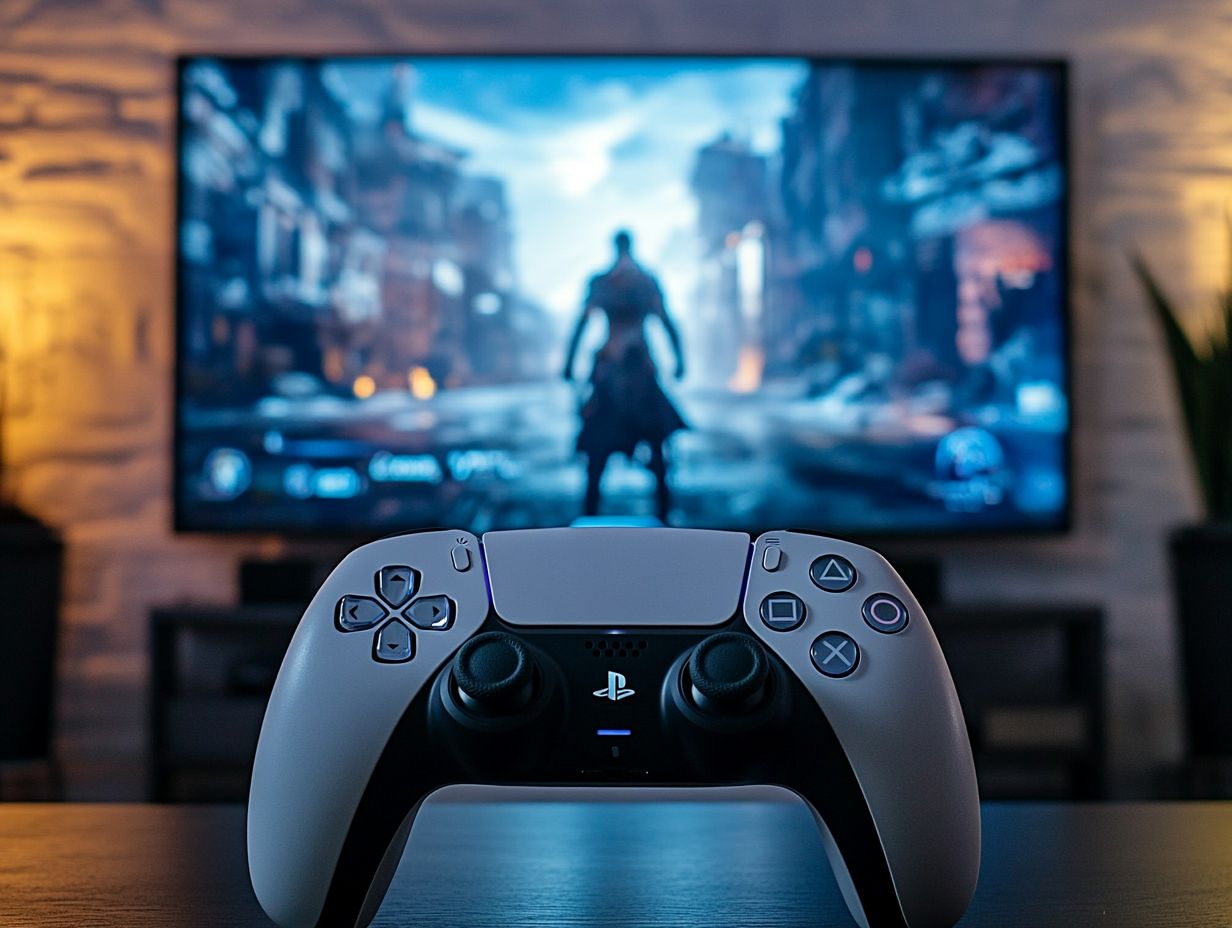
Tools like the Time Sleuth latency display analysis tool provide a precise method for measuring input response. It quantifies controller input lag in your gaming systems. This innovative device meticulously analyzes the signal delay between your actions on the controller and the corresponding response on the screen, delivering metrics in milliseconds for that all-important precision timing.
Hardware such as the Leo Bodnar Input Lag Tester is a favorite among tech enthusiasts. It employs a straightforward yet effective approach, using a series of timed pulses to measure the lag from your input device to the output display.
Both tools are essential for gamers who want to optimize performance, especially in competitive settings where every millisecond can make a difference.
Software solutions like LagTests can also enhance your setup by allowing you to perform input lag tests through screen capture and video analysis, ensuring you achieve the most responsive gaming experience possible.
Future Developments in Controller Technology
Future advancements in controller technology are poised to elevate your gaming experience to new heights. These innovations will concentrate on minimizing input response and optimizing overall performance, ensuring that every action you take in the game feels seamless and responsive.
Improvements and Innovations
Improvements and innovations in gaming controllers are poised to redefine your user experience, utilizing smart features that adjust to your needs to minimize latency and enhance responsiveness.
These advancements sharpen your reaction times in competitive gameplay and immerse you further into the action with haptic feedback and superior ergonomics. Get ready for designs that fit your hands perfectly, along with features that adapt to your individual preferences.
Compatibility with future gaming systems is a priority, ensuring seamless integration with next-generation consoles and PCs.
Innovations like wireless charging capabilities and modular add-ons promise to make controllers more versatile than ever, paving the way for customization and personalization that could transform how you engage with your favorite titles.
Understanding Controller Input Lag and Its Impact
What is controller input lag?
Controller input lag is the delay between when a button on a controller is pressed and when the action is registered on the screen. It is measured in milliseconds and can impact gameplay and responsiveness.
What causes controller input lag?
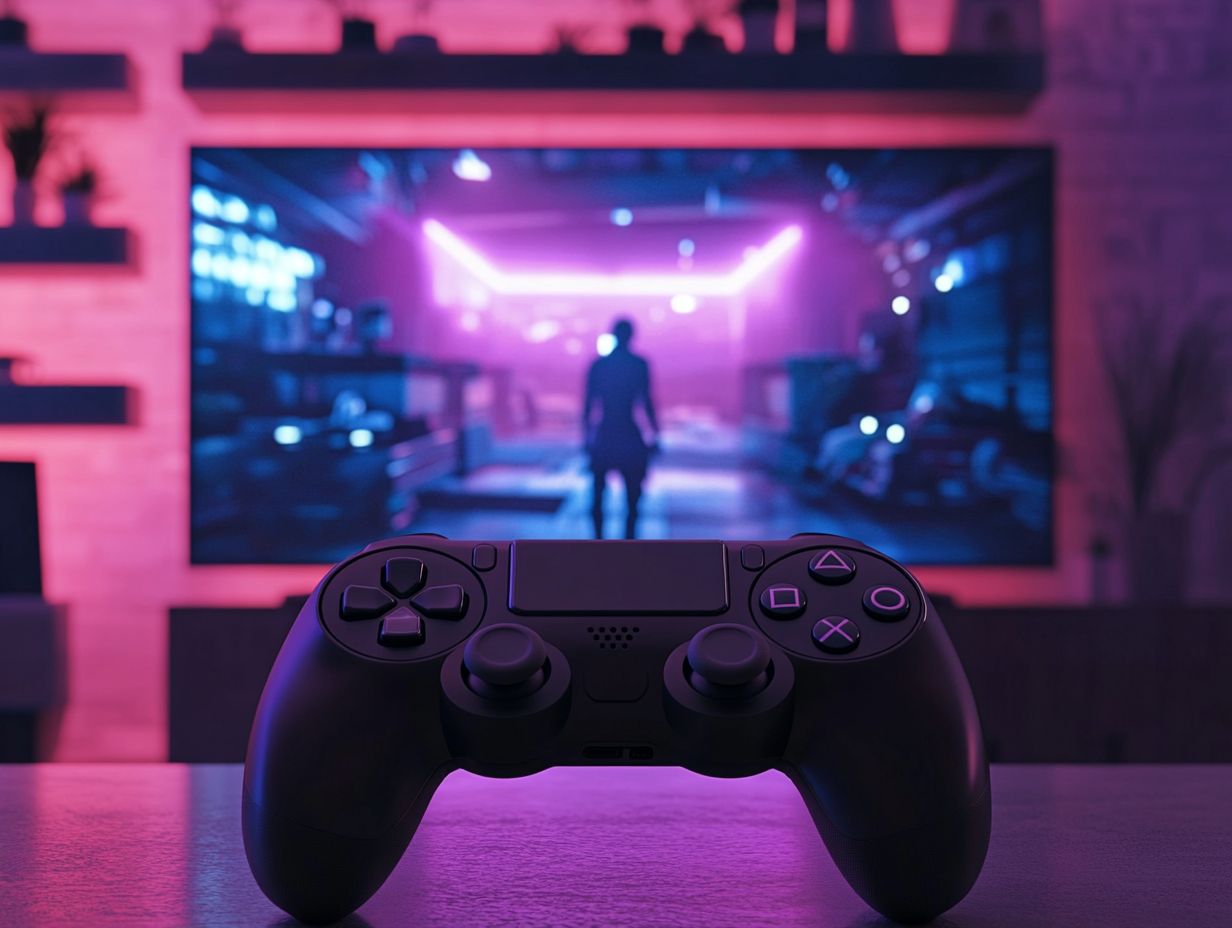
Controller input lag can be caused by factors like wireless connectivity, poor hardware or software optimization, and display lag.
How does controller input lag affect gameplay?
Controller input lag can cause delayed reactions and imprecise movements, which greatly impact gameplay, especially in fast-paced games that require quick reflexes and precise control.
Can controller input lag be fixed?
In some cases, controller input lag can be fixed by adjusting settings, using a wired connection, or using a gaming monitor with a higher refresh rate. However, it may also be due to hardware limitations that cannot be easily resolved.
Are all controllers affected by input lag?
While most controllers can experience some level of input lag, the severity can vary depending on the quality and type of controller. Some controllers, especially those with wireless connectivity, may have higher input lag than others.
Is input lag the same for all games?
No, input lag can vary between different games. This can be due to the game’s graphics and display settings, as well as the optimization of the game’s code and how it interacts with the controller. Some games may have higher input lag than others, making them less responsive to controller inputs.


